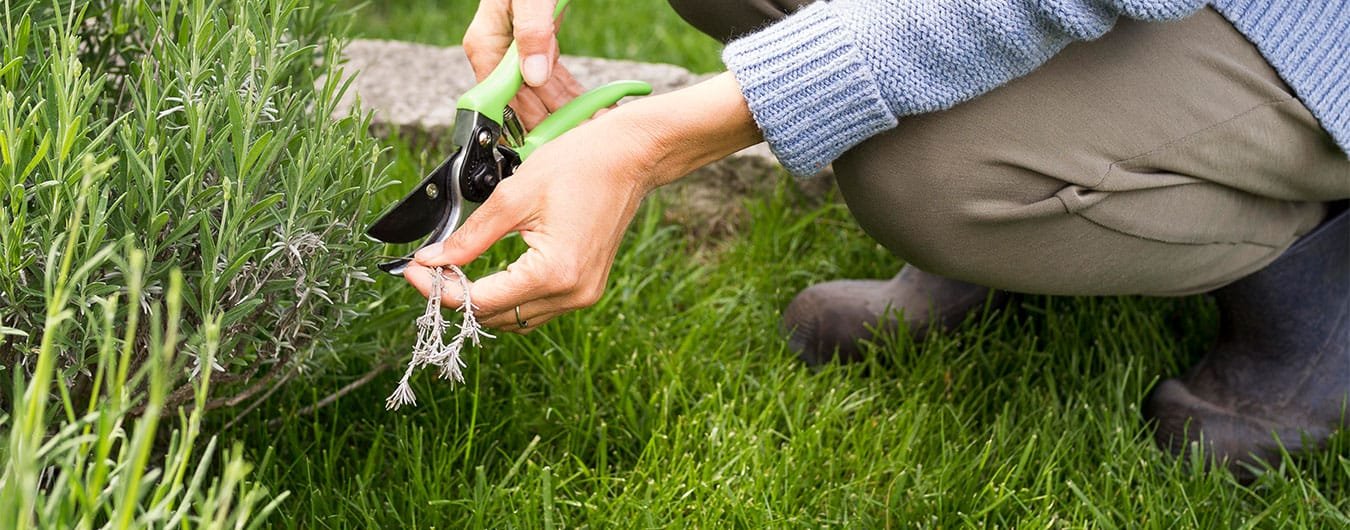Recognizing Common Lawn Fungal Diseases And How To Prevent Them
Common Lawn Fungal Diseases And How To Prevent Them
Let’s learn how to identify typical lawn fungal diseases and the steps to take to prevent them.
1. Dollar Spot
Dollar Spot is a fungal disease that generally affects cool-season grasses, such as perennial ryegrass, Bentgrass, and Fine Fescue. It is named a dollar spot because the affected area resembles a small, circular, tan spot, approximately the size of a silver dollar. The spot appearance may also include a reddish-brown border. In its worst condition, these spots may merge into large patches due to the combination of dead and dying grass. This disease is commonly seen in late spring or early summer.
How To Prevent: Ensure light fertilization, deep watering, and clipping removal to reduce the severity of the disease. Use organic matter, such as compost or nitrogen-specific fertilizers, to increase the nitrogen level and allow your lawn grass to recover quickly. Allow proper aeration and the right mewing height so that you can create an unfavorable environment for fungal growth.
2. Fairy Ring
If you notice a dark green, circular-shaped pattern in your lawn area, know that it is a fungal disease that grows underground and produces mushrooms in a ring shape as it expands. They may not always be perfectly circular and may appear in unformed circles. The soil contains this fungus, which can extend as deep as 12 inches underground. This fungus disease occurs as the fungus feeds on dead organic matter, which also affects the growth of the grass, making it thicker or thinner than the surrounding grass.
How To Prevent: To prevent fairy rings in your lawn, create a healthy environment by avoiding overly moist soil, ensuring proper drainage, and keeping your lawn clean of dead organic debris such as leaves, tree stumps, and roots, as these can contribute to fairy rings.
3. Brown Patch
Brown patches are a typical lawn fungal disease. It typically occurs during the summer or humid season. It affects grasses such as Kentucky bluegrass, Bentgrass, and tall fescue and appears in dark green circular patches that turn brown. This lawn disease is caused by the Rhizoctonia fungus, which typically occurs in wet weather conditions.
How To Prevent: To prevent brown patches in your lawn, ensure and maintain proper watering. Avoid watering at night time. Ensure adequate drainage and increase air circulation by using the aeration process. In areas prone to a high risk of this disease, you can apply fungicides to prevent it. Additionally, proper pest management by professional commercial lawn maintenance is essential to prevent this fungal disease.
4. Powdery Mildew
Powdery mildew is a fungal disease that can affect all types of turfgrass. The most commonly affected grasses are perennial ryegrass, Bermuda grass, and Bentgrass. If you notice the white powder coating on the grass blades, it is a sign of powdery mildew. This fungal disease commonly happens in high humidity. This condition is frequently observed in areas with poor air circulation, often due to shaded areas.
How To Prevent: The first step to improving the air circulation in your lawn area is to help prevent moisture buildup. Ensure the area is well-exposed to sunlight by thinning out dense trees and plants, which will help reduce the severity of mildew.
5. Snow Mold
Snow mold is a fungal disease that typically occurs in regions with cold winters and frequent snow. The snow molds are of two types: gray snow mold and pink snow mold. Pink snow mold is less common but more severe, characterized by circular patches or pinkish, slimy grass as a common symptom. Gray snow is a common lawn disease characterized by circular gray and white patches, although it is less severe than pink snow mold.
How To Prevent: To prevent this fungal lawn disease, rake the affected area in the spring and apply fertilizers to promote new growth. To prevent future outbreaks, proper drainage, and aeration can also be beneficial. Additionally, in severe cases, dethatching may be essential to remove the infected material.
Conclusion
If you’re facing fungal issues in your lawn, we have the solution for you. With expert treatment, we at Minneapolis Commercial Lawn & Snow do it all, whether it’s residential or commercial lawn maintenance. We ensure your lawn remains fungal-free and healthy throughout the year. Our services are affordable and reliable, so you don’t have to worry about digging holes in your pocket. With the right tools and equipment, we can handle all your lawn care and maintenance needs. Contact us at (612) 263-8858 to learn more about our services.


0 Comments